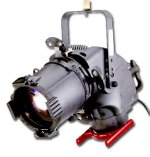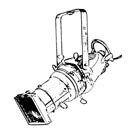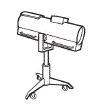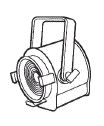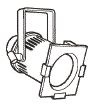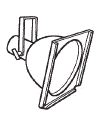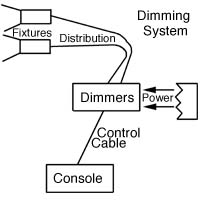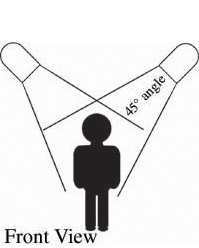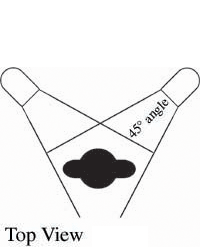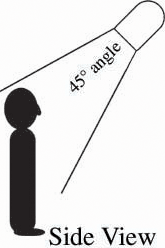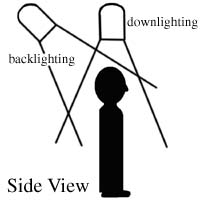|
HOME - SOBRE NÓS - NOSSO PRINCIPAL - CONTATE-NOS - TAXAS DO TÉCNICO - PROGRAMAÇÃO DA TAXA - LIGAÇÕES |
||||||||||||||
|
|
||||||||||||||
|
THEATRICAL LIGHTING: |
||||||||||||||
|
Porque você necessita uma SOLUÇÃO PROJETADA ORIGINAL. Princípios no ÁUDIO e no VÍDEO. Está você interessado em um Webcast vivo ou gravado? ESTALE AQUI. O que você necessita saber sobre o TEATRO HOME. CLASSES e certificações de UES. Você tem uma câmera da correia fotorreceptora no repouso? Estão aqui algumas PONTAS do LIGHTING. Lido sobre alguns PRODUTOS nós estamos tornando-nos. (esta página ainda unpublished.) LIGAÇÕES aos alguns fabricante de Web site do equipamento dos multimedia. Algumas publicações de comércio EM LINHA.
|
Lighting for videography and theatrical works are very different yet
very similar. Theatrical lighting is generally intended to be more
dramatic whereas lighting for videography is more utilitarian.
Regardless of your needs, UES can assist you in planning and
implementing the correct lighting scheme you need. There are HUGE
energy savings to be had for a lighting system designed properly. The following information is intended to help introduce you to different types of lighting for use in a theater environment. |
|||||||||||||
|
|
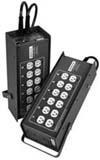
|
|
||||||||||||
|
Understanding the General Purposes of Lighting
So many different types of fixtures exist that it is easy to feel overwhelmed when looking through any lighting catalog. But there are only two basic purposes for the fixtures. Once you understand these purposes, it is much easier to sort through all of the different kinds of fixtures. This concept entails making certain areas of the stage brighter than others so that the audience will direct their attention to that particular spot. For example, if you have two characters talking on a crowded street, you want the audience to pay attention to those two actors, not the rest of the crowd. By highlighting their area (or dimming the rest of the stage), the audience will bring their attention to those two people. A wide area of coverage or "wash" is used to provide color or tone to the performance area. This can be done with one or more fixtures as in a color wash. Where the highlights do not reach, it may be desirable to fill in the shadows with softer light. Also known as Fill Lights for this purpose, they can be used to fill in the dark spaces of the stage. These lights are also used to provide additional lighting on actors. Wash lights provide a less directional beam of light than those used to accent. The Differences Between Fixtures
Controlling Your Lights
Almost all theatres and performance spaces have
some sort of dimming and control system. But portable dimming and
control also exists for temporary applications, outdoor or alternate
area performances. Most
lighting systems consist of four major components: control console,
dimmers, distribution, and fixtures.
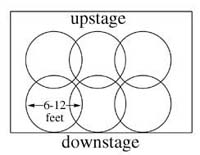
|
||||||||||||||
|
|
||||||||||||||
|
Adding Color and Texture When discussing color, it is important to understand the difference in color of light versus color of pigment. As taught in school, the primary colors of pigment are red, yellow and blue; mixed together they will make black. However, in colors of light, the primary colors are red, green and blue; when mixed together, the end color will be white light. When we talk about adding color to the lights, what we're really suggesting is adding a specially-made transparent/translucent piece of colored plastic in front of the lights. This plastic is known as gel, color media, color filter, or just color. The gel is a special transparent or translucent piece which can withstand higher temperatures (although it will lose its color as time goes on). This is the most common type of medium used to color lighting. Other methods include a more permanent glass filter or lamp dip (Colorine) for applications where low wattage will be used and gel is inappropriate to use. Gel is applied in front of the lights using a color frame. This frame allows a piece of gel to slide in between the two panels. Then the frame fits in the slots located at the front of the fixture. Cool colors include those in the blue-green-violet range. Warm colors include the red-yellow-orange range. Generally, it is ideal to add a cool color to one of the 45° angled front lights, and a warm color to the other. This will provide a good color of light on the actors' face or set, and give the illusion of depth. Color in the rest of the instruments depends on what feeling or mood you want your area to convey. For example, if you have a cheerful, fun musical, you'd most likely want to use warm, vibrant reds, pinks, yellows, etc. But you are the designer, so the choice is up to you. Textures of light add an interesting effect to any stage. If your setting is in a park, adding leafy patterns to the ellipsoidals will project a look of sunlight shining through the trees. This can also work for windows, clouds, or more abstract effects. Patterns can also be used to project images onto cycloramas; images such as clouds, stars, city skylines can be added rather easily (much more easily than painting a drop) and can change from scene to scene with less effort than flying drops in and out.
|
||||||||||||||


